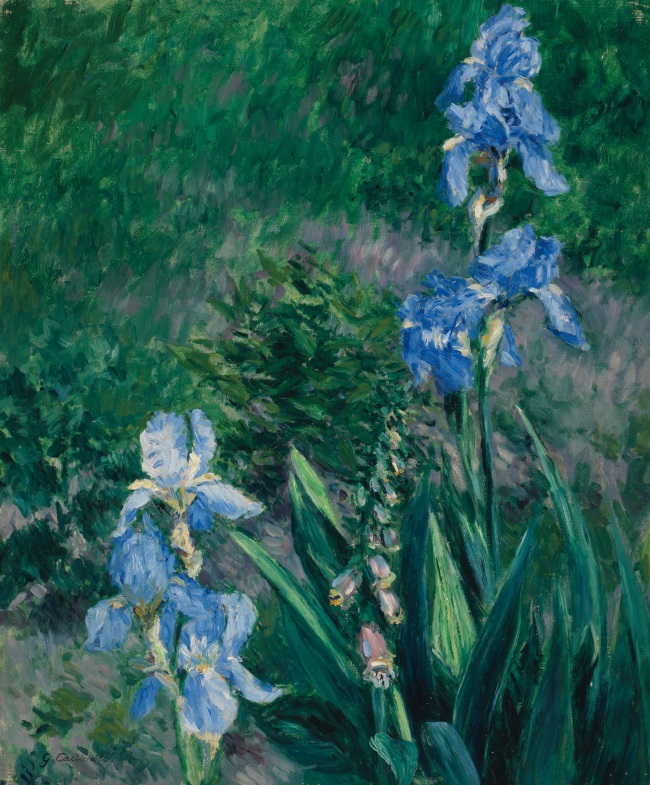
The charitable tax incentives for donations of certified Cultural Property – art and artifacts – is the richest in Canada. Cultural Property donations are exempt from capital gains tax and can be claimed against 100% of the donor’s net annual income over up to six years. The incentive is part of a complex regime that temporarily went off the rails due to a battle over a French Impressionist painting.
Here’s a brief review of the matter and the outcomes for donors.
The Auction
In November 2016, Heffel Fine Art Auction House sold an 1892 oil painting by Gustave Caillebotte featuring irises in his garden near Argenteuil on the Seine. The buyer was British; the seller a Toronto collector who owned the piece for 35 years. The sale price of Iris bleus, jardin du Petit Gennevilliers (“Iris bleus”) was $678,500.
The auction house, however, had a problem. The Canadian Cultural Property Export Review Board (“CCPERB”) blocked the export of the work. Heffel went to court to appeal the CCPERB decision and won in June 2018. See Heffel Gallery Limited v. The Attorney General of Canada, 2018 FC 605 (“Heffel”).
The Case
CCPERB, quoting the Cultural Property Export and Import Act (“CPEIA”), told the court that the painting was of “outstanding significance” and “national importance”. It further argued that national importance “is a quantitative assessment that is focused on degrees of quality, significance or rarity” and it was entitled to make these qualitative judgements. Justice Michael Manson ruled that this interpretation of national importance was “unreasonable”. Citing s. 11 of the CPEIA, he held the object must be “of such a degree of national importance that its loss to Canada would significantly diminish the national heritage.” Iris bleus did not hit this mark.
Justice Manson also said “most objects in the Control List require a direct connection to Canada, such as having been recovered in Canada, made in Canada, made by a person who once resided in Canada, or otherwise having some relation to Canadian history or a Canadian theme or subject.” This Canada-first view applied not just to exports, but also to the donation of foreign art to Canadian institutions.
In 2018 and early 2019, donations of Cultural Property of international art to Canadian museums stopped temporarily. CCPERB continued to certify donations of Canadian art but deferred the acceptance of donations of international art until there was greater legal clarity.
The New Rules
Budget 2019 responded to an outcry from museums and public galleries who feared the ruling would kill tax-advantaged donations of foreign art to Canadian public collections. Changes to the Income Tax Act and CPEIA removed the “national importance” criterion to gifts of cultural property. Henceforth, gifts of cultural property will only need to be a work of “outstanding significance” because of its close association with Canadian history or national life, its aesthetic qualities, or its value in the study of the arts or sciences. Little or no direct connection to Canadian is required. The “national importance” criterion will, however, continue to apply to exports of cultural property, which was the issue at the heart of Heffel.
Post-Mortem
What has happened since? The status quo was re-established, which is positive for donors and museums. International art began to be certified as Cultural Property again in late 2019. Donations resumed. One result of the new rules is the update by CCPERB of its public communications. In 2020, CCPERB updated its guidelines and website for the new regime. It is much clearer about dates and process than any previous iteration. And it may now be one of the best-looking Federal Government websites, which is an admittedly low bar.
Auction houses and art dealers are generally disappointed by the change. Many art dealers and collectors are in favour of fewer export restrictions, which undermine confidence in the Canadian market. Pity the merchant that is prevented from delivering a product to a customer.
The news for donors, and especially estate donors, is positive. The restating of the Cultural Property rules provides greater certainty for years to come.
Iris bleus?
And the painting that kick-started the whole process? The export of Iris bleus was blocked. In August 2019 the Art Gallery of Ontario (AGO) announced it had purchased the painting from the UK buyer for more than $1 million. The AGO received $540,000 from the Department of Heritage through the Moveable Cultural Property Grants program for the purchase.
The painting is a minor work from a key figure of the Impressionist movement. But if you were paying careful attention, the AGO, with Federal Government help, paid at least $300,000 more for Iris bleus than the price at auction two years before. The Cultural Property rules created the crisis and then resolved it through the Cultural Property regime’s own emergency funding program. With a generous subsidy the AGO overpaid to buy the painting.

1 Comment
Kim Falconer
January 26, 2021 - 5:37 amVery interesting read Malcolm.